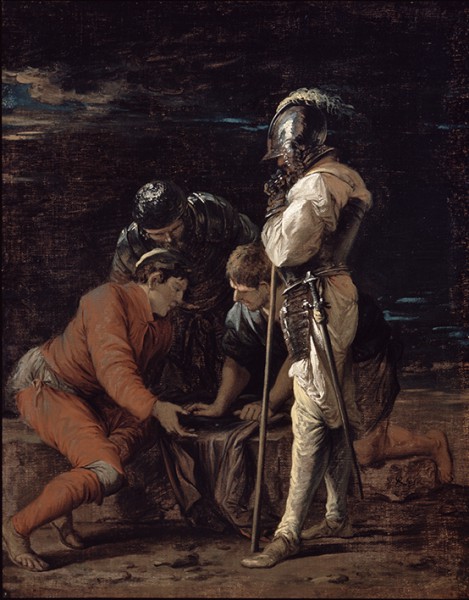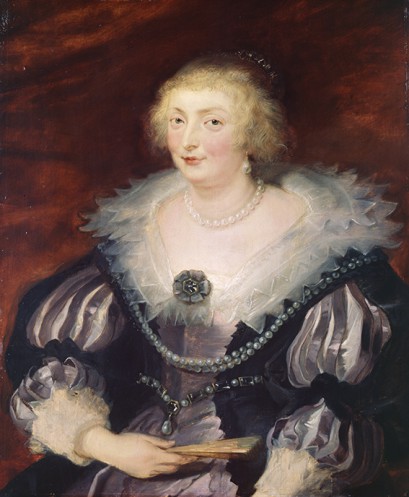

Outstanding works by Flemish, Dutch and Italian painters from the collection of the Dulwich Picture Gallery in London may be viewed at the Royal Łazienki Museum from 9 September to 1 December 2022. The paintings will be presented in Poland for the first time.
The exhibition "Masterpieces for the King? Rubens, van Dyck, Teniers the Younger from the collections of Dulwich Picture Gallery" is open from 10.00 to 16.00.
European masterpieces in Royal Łazienki
Five masterpieces of 17th- and 18th-century European painting are on display at the Officer Cadets School: "Portrait of a Lady" by Peter Paul Rubens, "Madonna and Child" by Anthony van Dyck, "Talking Peasants Against a Landscape with a Church" by David Teniers the Younger, "The Judgement of Paris" by Adriaen van der Werff and "Soldiers Playing Dice" by Salvatore Rosa. Before these paintings were added to the collection of the Dulwich Picture Gallery, they were purchased by Noel Desenfans, a popular London art dealer, and advertised as "acquired for His Majesty the King of Poland"
"Portrait of a Lady" by Peter Paul Rubens
Peter Paul Rubens (1577–1640), one of the most prominent artists of the Baroque era, worked on commission for Europe’s greatest rulers and courts in Italy, Paris, Brussels, Madrid and London. His large-scale religious and mythological paintings are characterized by baroque grandeur, virtuosity in painting technique and rich, luscious colours. He was also an outstanding portraitist.
It is not certain who the lady depicted by him is. Some researchers believe that she may be the Duchess Catherine Manners (c. 1603–1649), wife of George Villiers, Duke of Buckingham. However, the elements of her costume suggest that the portrait should be placed around 1625. Catherine was younger at the time. In the 18th century, the painting, which Desenfans acquired with the intention to add it to the collection of Stanislaus Augustus, was regarded as representing Catherine de Medici.
The model remains unidentified, however there is no doubt that she came from the highest aristocratic circles. She wears an exquisite court dress as was fashionable in Paris at the time. The lady’s shoulders and waist are decorated with rich strings of pearls, and the bodice of the dress with a jewelled rosette. In a part of the dress, the painting remained unfinished. However, the head of the portrayed woman was superbly rendered. Her dishevelled fawn hair is shown masterfully using delicate brushstrokes, and the luminous complexion of the gracefully smiling face with full cheeks is rendered with subtle, sophisticated shades of pinks and fleshy whites.
It is not known when the London art dealer came into possession of the portrait. In 1802, he put it up for auction among the works advertised as being purchased for Stanisław August. Four paintings in the King’s collection are believed to be Rubens originals; it is unknown whether any of them were actually original.
"Madonna and Child" by Anthony van Dyck
Anthony van Dyck (1599–1641), a Flemish painter, pupil and collaborator of Rubens, worked in Antwerp, Genoa, Florence and Rome, and from 1632 permanently in London for Charles I Stuart. He was an eminent creator of sophisticated, court portraits painted with virtuosity, as well as historical paintings.
Shrouded in richly draped folds of silk fabric, the Madonna, raising her eyes to the heavens, holds the little Jesus standing on her lap. The child leans on his Mother’s breast with a touching, natural gesture, grasping the fabric of her dress with his hand. It is one of van Dyck’s most famous religious compositions. It was created shortly after the painter returned from Italy. It features clear inspirations from Titian’s paintings. Van Dyck painted as many as three original versions of the "Madonna and Child". The composition gained great popularity and was reproduced in engravings and oil copies in the master’s workshop, as well as by later painters.
The Dulwich painting was probably owned by Madame de Julienne, an eminent collector from Paris, and later by Jean Baptiste Lebrun, the famous art dealer from whom it was most likely purchased by Desenfans in 1791 with the purpose of being transferred to the collection of Stanisław August. The catalogues of the royal art collection list four paintings by van Dyck (we now know that they were not original). "Madonna and Child" would undoubtedly be the jewel of this collection if it had found its way to Warsaw.
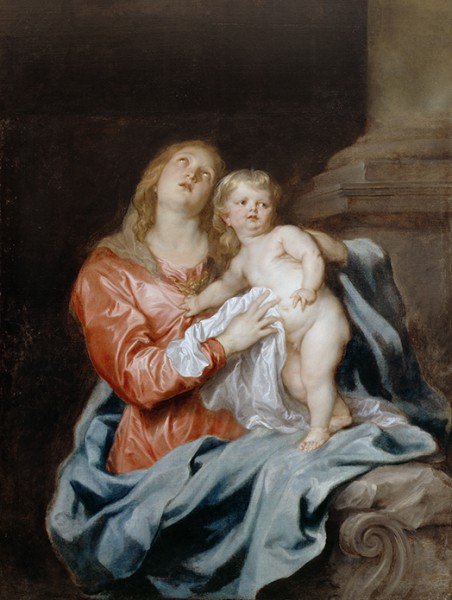
"Talking Peasants against a Landscape with a Church" by David Teniers the Younger
David Teniers the Younger (1610–1690), one of the most highly valued Flemish painters of the 17th century, also extremely popular among 18th-century art amateurs. He was active in Antwerp and Brussels, where he served as court painter and gallery curator to Archduke Leopold Wilhelm Habsburg. Teniers’ speciality was calm genre scenes with peasant themes: interiors of taverns or views of rural homesteads with figures of peasants and vast landscapes full of space.
The painting "Talking Villagers against a Landscape with a Church" depicts two villagers in the middle plan, immersed in conversation and making vigorous gestures. A third, with his back turned – pees; they are accompanied by a small dog. This picturesque and humorous scene fits in with the nature around them, which is depicted in very convincingly. The majority of the painting is taken up by a wide expanse of sky, veiled in silvery and ashen clouds. It stretches above the village hidden in the dark green of the trees and the village church, whose steeple emerges from among their crowns. The whole is painted in a fashion that is typical of Teniers: with light, fluid, sketchy and yet delicate brushstrokes.
We have no certainty as to when the painting was purchased by Desenfans: probably in 1791, with the gallery of Stanisław August in mind, who, like most 18th-century collectors, held Teniers’ paintings in high esteem and had several works by the master.
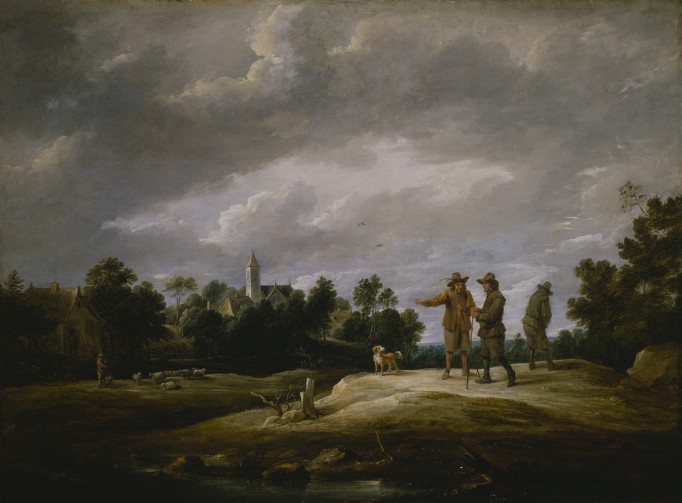
"The Judgement of Paris" by Adriaen van der Werff
Adriaen van der Werff (1659–1722), a Dutch painter active in Rotterdam and from 1696 in Düsseldorf, at the court of the Elector of the Palatinate, John William II. He was one of the last painters creating his works in the "smooth manner", which originated in the circle of artists working in Leiden and was highly appreciated by the public. Paintings made using this technique were characterized by an extremely smooth, enamel-like texture and precision in the rendering of detail.
Van der Werff combined this manner with the inspiration of classical art that emerged in the early 18th century. In his paintings, we find numerous quotations taken from famous ancient sculptures, paintings by Raphael, Guido Reni or Italian engravings. "The Judgement of Paris" is an excellent example of this. Slender bodies, gestures and dancing poses of Juno, Minerva and Venus – the goddesses whose beauty Paris is to judge – and the figure of the shepherd himself holding a golden apple which he is about to hand to the most beautiful of them all, the goddess of love, are reminiscent of ancient statues.
The painting comes from the famous collection of the Dukes of Orleans. Desenfans acquired it in 1796, i.e. one year after the abdication of Stanisław August, when the dethroned monarch would certainly not buy the collection which was being created for him. Nevertheless, Desenfans included the work in a catalogue of paintings exhibited in 1802 and announced by him as having been purchased for the Polish king.
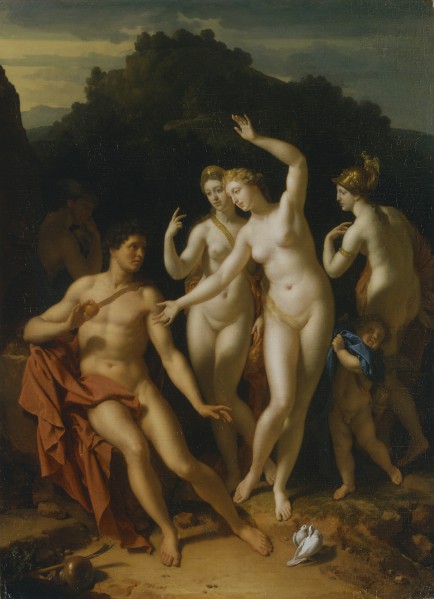
"Soldiers Playing Dice" by Salvatore Rosa
Salvator Rosa (1615–1673), a Neapolitan painter, active in his home town and settled permanently in Rome from 1635. His genre scenes with hermits, vagabonds and soldiers depicted against wild, romantic landscapes were most appreciated by his contemporaries. Rosa’s individual, original painting style is characterized by expressive, textural and sketchy painting technique, and a nervous brush stroke.
In 1656, the artist created a series of etchings entitled "Figurine". These were picturesque representations of various characters originating from the people, busy with activities that were difficult to define. The most numerous of them are soldiers or banditti – difficult to distinguish in Italy at the time, as the former were recruited from among the highwaymen living in the wilderness and forests. The figures – figurines – from the etchings were then repeated in his oil paintings, created from the 1650s onwards. The Dulwich painting is considered one of the best in Rosa’s oeuvre and unique in that the soldier figures depicted here do not complement the landscape, but are the subject of the painting in themselves.
The painting was included in the catalogue of the works announced by Desenfans in 1802 as having been acquired for the Polish king. If the canvas had reached the royal collection in Warsaw, it would have been an important addition to it: Stanisław August’s gallery did not abound in Italian works of good quality.
